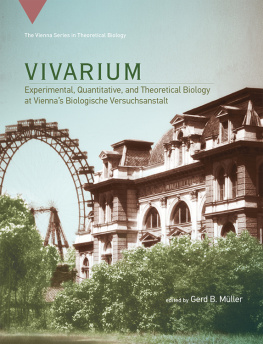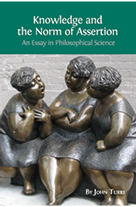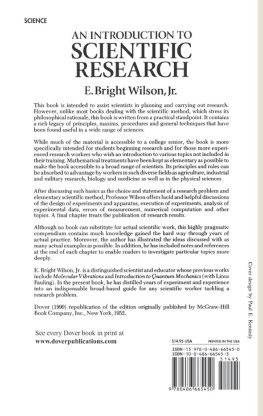
Vienna Series in Theoretical Biology
Gerd B. Mller, editor-in-chief
Thomas Pradeu, Katrin Schfer, associate editors
The Evolution of Cognition, edited by Cecilia Heyes and Ludwig Huber, 2000
Origination of Organismal Form, edited by Gerd B. Mller and Stuart A. Newman, 2003
Environment, Development, and Evolution, edited by Brian K. Hall, Roy D. Pearson, and Gerd B. Mller, 2004
Evolution of Communication Systems, edited by D. Kimbrough Oller and Ulrike Griebel, 2004
Modularity: Understanding the Development and Evolution of Natural Complex Systems, edited by Werner Callebaut and Diego Rasskin-Gutman, 2005
Compositional Evolution: The Impact of Sex, Symbiosis, and Modularity on the Gradualist Framework of Evolution, by Richard A. Watson, 2006
Biological Emergences: Evolution by Natural Experiment, by Robert G. B. Reid, 2007
Modeling Biology: Structure, Behaviors, Evolution, edited by Manfred D. Laubichler and Gerd B. Mller, 2007
Evolution of Communicative Flexibility, edited by Kimbrough D. Oller and Ulrike Griebel, 2008
Functions in Biological and Artificial Worlds, edited by Ulrich Krohs and Peter Kroes, 2009
Cognitive Biology, edited by Luca Tommasi, Mary A. Peterson and Lynn Nadel, 2009
Innovation in Cultural Systems, edited by Michael J. OBrien and Stephen J. Shennan, 2010
The Major Transitions in Evolution Revisited, edited by Brett Calcott and Kim Sterelny, 2011
Transformations of Lamarckism, edited by Snait B. Gissis and Eva Jablonka, 2011
Convergent Evolution: Limited Forms Most Beautiful, by George McGhee, 2011
From Groups to Individuals, edited by Frdric Bouchard and Philippe Huneman, 2013
Developing Scaffolds in Evolution, Culture, and Cognition, edited by Linnda R. Caporael, James Griesemer, and William C. Wimsatt, 2014
Multicellularity: Origins and Evolution, edited by Karl J. Niklas and Stuart A. Newman, 2016
Vivarium: Experimental, Quantitative, and Theoretical Biology at Viennas Biologische Versuchsanstalt, edited by Gerd B. Mller, 2017
Landscapes of Collectivity in the Life Sciences, edited by Snait B. Gissis, Ehud Lamm, and Ayelet Shavit, 2017
Vivarium
Experimental, Quantitative, and Theoretical Biology at Viennas Biologische Versuchsanstalt
edited by Gerd B. Mller
The MIT Press
Cambridge, Massachusetts
London, England
2017 Massachusetts Institute of Technology
All rights reserved. No part of this book may be reproduced in any form by any electronic or mechanical means (including photocopying, recording, or information storage and retrieval) without permission in writing from the publisher.
This book was set in Times New Roman by Toppan Best-set Premedia Limited. Printed and bound in the United States of America.
Library of Congress Cataloging-in-Publication Data
Names: Mller, Gerd (Gerd B.) editor.
Title: Vivarium : experimental, quantitative, and theoretical biology at Viennas Biologische Versuchsanstalt / edited by Gerd B. Mller.
Description: Cambridge, MA : The MIT Press, [2017] | Series: Vienna series in theoretical biology | Includes bibliographical references and index.
Identifiers: LCCN 2017001169 | ISBN 9780262036702 (hardcover : alk. paper)
eISBN 9780262342032
Subjects: LCSH: Vivariums. | Biology, Experimental.
Classification: LCC QH68 .V55 2017 | DDC 570.72/4--dc23 LC record available at https://lccn.loc.gov/2017001169
ePub Version 1.0
Series Foreword
Biology is a leading science in this century. As in all other sciences, progress in biology depends on the interrelations between empirical research, theory building, modeling, and societal context. But whereas molecular and experimental biology have evolved dramatically in recent years, generating a flood of highly detailed data, the integration of these results into useful theoretical frameworks has lagged behind. Driven largely by pragmatic and technical considerations, research in biology continues to be less guided by theory than seems indicated. By promoting the formulation and discussion of new theoretical concepts in the biosciences, this series intends to help fill important gaps in our understanding of some of the major open questions of biology, such as the origin and organization of organismal form, the relationship between development and evolution, and the biological bases of cognition and mind. Theoretical biology has important roots in the experimental tradition of early-twentieth-century Vienna. Paul Weiss and Ludwig von Bertalanffy were among the first to use the term theoretical biology in its modern sense. In their understanding the subject was not limited to mathematical formalization, as is often the case today, but extended to the conceptual foundations of biology. It is this commitment to a comprehensive and cross-disciplinary integration of theoretical concepts that the Vienna Series intends to emphasize. Today, theoretical biology has genetic, developmental, and evolutionary components, the central connective themes in modern biology, but it also includes relevant aspects of computational or systems biology and extends to the naturalistic philosophy of sciences. The Vienna Series grew out of theory-oriented workshops organized by the KLI, an international institute for the advanced study of natural complex systems. The KLI fosters research projects, workshops, book projects, and the journal Biological Theory, all devoted to aspects of theoretical biology, with an emphasis onbut not restriction tointegrating the developmental, evolutionary, and cognitive sciences. The series editors welcome suggestions for book projects in these domains.
Gerd B. Mller, Thomas Pradeu, Katrin Schfer
Foreword
Where do stories start and where do stories end? Sometimes dates can be precise but sometimes not. Of course, it all depends on how the story itself is defined. Certain dates in this enthralling book are indeed precise. The Biologische Versuchsanstalt (BVA)the Institute for Experimental Biologylocated in the Vivarium building in Vienna, came into existence in 1902, and perhaps its soul can be said to have died in 1938, even though the Vivarium itself survived until April 1945, when it was totally destroyed by fire.
On the other hand, why might the dates for the BVA perhaps be imprecise, or even never ending? This rich book answers that question unambiguously. In chapter 1, Georg Gaugusch presents the background and genealogy of the three families from which the three founders of the BVA came. He also sets the background for why the three may have chosen, in the context of their heritage and society in Vienna at the time, to devote themselves so completely, in terms of both commitment and money, to the BVA. So perhaps the start date is imprecise because, for two of the families, reference is made to their ancestors from Prague as far back as the sixteenth and seventeenth centuries! It is persuasively argued here that the nature and motives of the three founders, in the context of Viennese and wider Austrian society at the turn of the twentieth century, are best understood on the basis of the attitudes, traditions, and expectations that had developed and evolved over those preceding 300 years. And why never ending? The innovativeness of the approaches initiated in the BVA, and then sustained for 35 years, provides the material for the varied and compelling chapters 2 through 7. Each focuses on specific and distinct research activities that were undertaken, illuminating their global importance in initiating and advancing new ways to consider and address topics within the biological and life sciences. So, the story is never ending because it is clear from these accounts that foundations were being laid for different ways of thinkingand thinking evolves and never ends! These chapters contain a rich and broad narrative, not only describing the research undertaken in the BVA but also highlighting the importance of the very many individuals who, in addition to the three founders of the BVA, made it all happen, sometimes under difficult personal circumstances. Chapters 8 to 11 focus particularly on four individuals and give depth to the story of the BVA. In combination, the twelve chapters convey the vision that was at the start of it all in 1902, its development up to 1938, and subsequently, in light of the global development of the biological and life sciences, the BVAs enormous, almost forgotten legacy and its global influence on modern biology and the life sciences. What makes this book special is that it brings into the open an important piece of the history of biological and life sciences that has been hidden and never, until now, fully recorded or even fully recognized. It is an important contribution to the history of these sciences as well as to the histories of all the individuals who were involved. Focusing on the BVA also contributes greatly to our understanding of the sociopolitical context in which science develops.
Next page

















